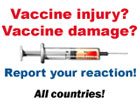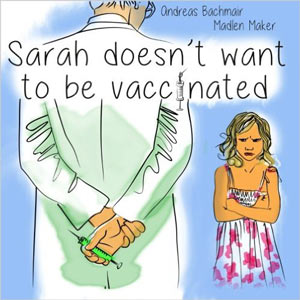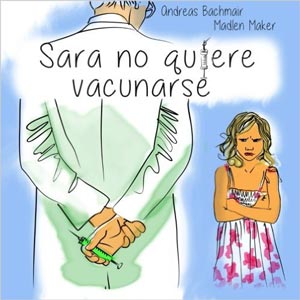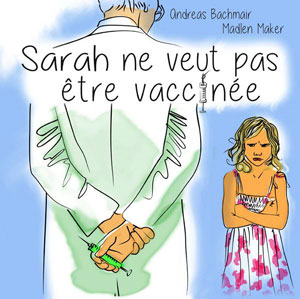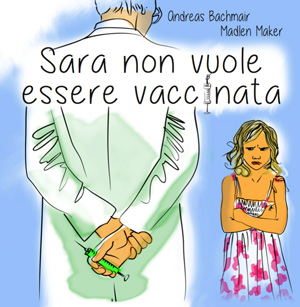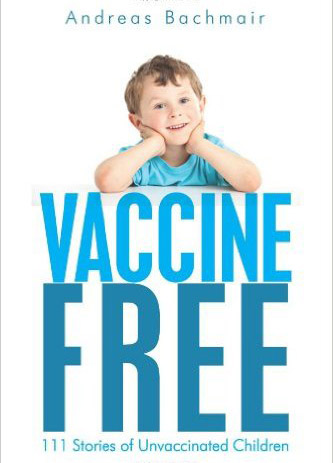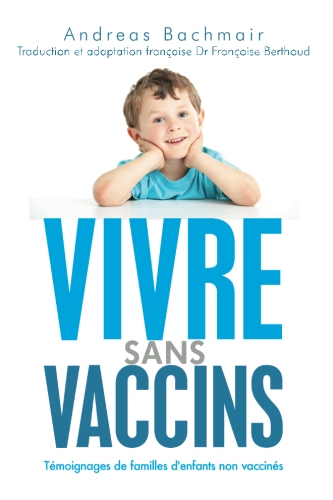Vaccine side effects
Potential severe reactions/follow-up damages after vaccinations:
- Chronic immune weakness involving frequent infections (frequently repeatedly inner ear infections)
- Encephalopathia = brain disease (This is a brain edema caused by the vaccination: it mainly pertains to children younger than 3 years of age who cannot react to the vaccination with an infection because their brains are not yet fully developed) Encephalopathia is frequently overlooked as it does not always entail severe symptoms. However, there can later be developmental retardation. Encephalopathia can also trigger cri encéphalique.
- Screaming/Cri encéphalique (usually extremely penetrating and shrill) = sign of potential brain damage
- Autoimmune diseases (please refer also to vaccinations and immune system)
- Trigger of allergies such as asthma, skin allergies, hay fever, food allergies...(please refer also to vaccinations and immune system)
- Seizures
- Epilepsia
- Autism
- Sleeping sickness
- Sleep reversal (child awake and restless at night, sleeps during the day)
- Personality changes, behavioral disorders, difficult to train, hyperactive children, ADS, apathy
- Diabetes
- Multiple sclerosis
- Delay of development of language
- SID (Sudden infant death)
- Neurological problems
Officially recognized vaccine damages
The above mentioned follow-up damages are generally not recognized in accordance with "official" opinion, or when they do occur, they are not associated directly with the vaccination. Until 2007, vaccine damages which were officially recognized essentially complied with the criteria for medical experts in social right of damage claims and complied with the "law for severely disabled people" ("Schwerbehindertengesetz", as published by the Ministry for Work and Social Order). All pension and damage claim offices were instructed to base their decisions on them.
Since 2007 the criteria which defines what is a standard reaction and what is a vaccine reaction which exceeds normal measure is drawn up by STIKO and is published in the Epidemiological Bulletin. This is in accordance with the Law on Infection Protection, Paragraph 20.
Criteria for medical expert opinions
Poliomyelitis vaccination
a) with live vaccine:
Standard vaccine reaction: A few days after the vaccination occasionally - and lasting only a couple of days - diarrhea, vomiting, elevated temperature, exanthemia, headache and fatigue.
Vaccine damages: Poliomyelitis-like diseases with weak paralysis of a minimum of six weeks duration (vaccine poliomyelitis): incubation period for person vaccinated 3 to 30 days, occurrence of paralysis not before the sixth day after the vaccination. If there is an immune defect the incubation periods that were observed are longer (up to several months).
Guillain-Barré-Syndrome is generally only directly related to the vaccination if the disease starts within 10 weeks after the vaccination. Meningoencephalitis, which has not been observed very often, and/or manifestation of brain-organic seizures without the symptoms of vaccine poliomyelitis always require careful diagnostic clarification.
b) with vaccine from inactivated viruses:
General vaccine reactions: Local reaction, rarely light general afflictions
Vaccine damage: have not been observed for today's vaccines I
Vaccination to protect against measles
a) with live vaccine:
Standard vaccine reaction: After the seventh day vaccine measles occur occasionally (mild imitation of the disease) lasts up to 3 days without infecting surroundings
Vaccine damage: Acute inflammatory diseases of the central nervous system require particularly careful diagnostic clarification. A direct connection to the vaccination can be considered if the disease occurs within 7 to 14 days within the vaccination, antibodies can be proven and other causes of the disease can be excluded. If there are seizures within the first post-vaccination week they can not be due to the vaccination as at this point in time there is nothing present in the blood.
"Split" vaccine
General vaccine reactions: Local reaction, sometimes slight general afflictions
Vaccine damage: Except for very rare allergic reactions, no damages
Rubella vaccination
Usual vaccine reactions: within the first 3 weeks occasionally arthalgia/acute arthritis, exanthema, elevated temperature, lymphadenitis.
Vaccine damages: Very rarely chronic arthritis, danger of foetus being harmed during the first three months of pregnancy.
Influenza vaccination
Standard vaccine reactions: Very slight local reaction, mild general afflictions.
Vaccine damages: Rarely acute thrombocytopenic purpura, rarely Guillain-Barré-Syndrome (up to 10 weeks after vaccination). Other acute inflammatory diseases of the central nervous system are even more rare and require a special and careful diagnostic clarification. A causal connection to the vaccination can be considered if the disease occured within 3 weeks after the vaccination.
Yellow fever vaccination
Standard vaccine reaction: Rarely between the 5th and 8th day slight flu-like afflictions.
Vaccine damage: Extremely rarely meningoencephalitis (mainly in small babies and small children), rarely thrombocytopenias.
Rabies vaccination
Standard vaccine reaction: Aside from local reactions elevated temperature, general afflictions, fatigue, occasionally joint pain.
Vaccine damages: In vaccines that used to contain brain tissue encephalomyeltis or polyneuritis after a few days up to several weeks, occasionally phlegmonia, nepthritis.
With the cell culture vaccines which are used today very rarely neuritis, polyneuritis, Guillain-Barré-Syndrome.
Cholera vaccination
Standard vaccine reactions: Mainly after booster vaccination for a couple of day local reaction, regional lymph node swelling, occasionally fever, diarrhea, nausea, rarely exanthema.
Vaccine damage: Very rarely neuritis.
Typhus vaccination
a) Oral vaccination: No known vaccine damages.
b) With parenteral vaccination:
Standard vaccine reactions: Similar after cholera vaccination, generally more pronounced, exanthema occur more frequently.
Vaccine damages: Occasionally thromboses, neuritis, encephalomyelitis, kidney damage, reactivation of tubercular diseases.
Tuberculosis vaccination (BCG)
Standard vaccine reactions: 2 weeks to 3 months after the vaccinations little node-like infiltrations, sometimes accompanied by fusion of vaccination spot, regional swelling of lymph nodes, no general afflictions.
Vaccine damages: Long lasting and extended ulcers, sometimes accompanied by lymph node fusion, very rarely celoids, lupoids, tuberkulidis, including generalization, ostitis or osteomyelitis, occassionally with latency periods of up to several years; virus must be proven (BCG strain).
Pertussis vaccination
a) Full bacteria vaccine:
Standard vaccine reactions: Frequently local reactions including swelling of the lymph node of the region affected, elevated temperature between 1st and 3 rd day; lack of appetite, nausea, vomiting, furthermore very rarely within hours after the vaccination conditions that resemble shock.
Vaccine damages: Rare. Occasionally after continuous shrill screaming - within 3 days occurrence of encephalopathia, frequently brain-organic seizures, sometimes progredient course. After encephalopathia rarely lasting damages (spastic paralysis and mental retardation). Rarely neuritis (particularly brain nerves), rarely nephrosis.
b) Acellular vaccines:
Standard vaccine reactions: Similar as with full bacteria vaccine, but more rare.
Vaccine damages: As yet there have been no long term trials conducted.
Diphtheria vaccination
Standard vaccine reactions: Generally only slight local reactions, including general afflictions and exanthemas.
Vaccine damages: Very rarely acute inflammatory diseases of the central nervous system; they require a very careful diagnostic clarification. A causal connection to the vaccine is considered if the disease occured within 28 days after the vaccination, antibodies can be proven and other causes of the disease can be excluded. Very rarely neuritis, mainly of the brain nerves (like in the disease), thrombosis, nephritis.
Tetanus vaccination
Standard vaccine reactions: local reaction, amplified after hyper immunization.
Vaccine damage: Very rare neuritis, Guillain-Barré-Syndrome.
Mumps vaccination
Standard vaccine reactions: Within the first three days occasionally fever, very rarely parotitis, swelling of the lymph nodes
Vaccine damages: Very rarely meningitis after 7-30 days without lasting damage, orchitis (usually on one side). There is a scientific controversy concerning causal connection between vaccinations and insulin-dependent diabetes mellitus (Type I diabetes).
Hepatitis-A vaccination
Standard vaccine reaction: Local reaction, low level of general afflictions, occasionally slightly elevated temperature Vaccine damage: long-term experiences have not been supplied yet
Hepatitis-B-vaccination
General vaccine reactions: Local reaction, general afflictions, occasionally slightly elevated temperature
Vaccine damage: Arthralgia - passing and lasting up to several weeks , very rare neuritis, polyneuritis Guillain-Barré-Syndrome.
Haemophilus-influenza-B-vaccination
General vaccine reactions: Local reaction, general afflictions, occasionally urticaria.
Vaccine damage: Extremely rare Guillain-Barré-Syndrome.
Early summer-Meningoencephalitis-vaccination
General vaccine reactions: within 12 to 48 hours after vaccination there is a local reaction, general afflictions
Vaccine damage: Extremely rare: damage to the nervous system
Above mentioned vaccine damages have not been conclusively described but are recognized by the disability and pension authorities and the courts when requirements have been met. The damages that are listed have not been conclusively described. The various references merely contain damages that have occurred. The additives in the vaccines, such as thimerosal, can also trigger undesired effects.
Officially recognized vaccine damages according to the leaflet published by the Federal Health Authorities |
|
All vaccines: Allergic reactions to additives in the vaccines (e.g. egg white or mercury); fever cramps triggered by the body's resistance Diphteria-Tetanus: Guillain-Barré-Syndrome (GBS: inflammation and damage of the peripheral nerves) Tetanus: GBS Measles-Mumps-Rubella: Drop in number of red blood cells Measles: severe brain damage, up until now only known in three children who had proven weakened immune systems Rubella: acute arthritis in female adults, sometimes longer lasting or returning Mumps: Meningeal inflammation (1:10.000) Pertussis: acute meningeal inflammation, sometimes lasting brain damage Yellow fever: Meningeal inflammation (21 cases in the last 40 years, mainly in new borns) yellow-fever-like diseases (7 cases) Polio – vaccination (a new vaccine is being used): vaccination can cause polio, primarily in people whose immune system is weakened (2 of 3 million people who were vaccinated). No adverse effects have been been described for the new vaccine. Tuberculosis (BCG): Vaccination can trigger TBC, mainly in people whose immune system is weakened (1 out of 1 million), inflammation of the bone (15 of 100000), meningeal inflammation (3 cases worldwide)– the vaccine is therefore only recommended for people who are at risk. Influenza: GBS TBE: GBS Bundesgesundheitsblatt 4/2002 The Bundesgesundheitsblatt also refers to diseases which can be connected to vaccinations: (Context which has neither been proven nor refuted) |
|
Tetanus: Seizures, inflammation of the joints, inflammation of the skin Haemophilus influenza (virus of flu-like diseases and also of inflammation of the epiglottis and meningeal inflammation): BGS, inflammation of the spinal cord, reduction of thrombocytes (thus delay of blood clotting) v Measles: Meningitis, paramyelitis, GBS, inflammation of the nervous system MMR: Impaired gait as a result of temporary inflammation of the brain Mumps: Deafness, sterility, thrombocytopenia Whooping cough (full bacteria vaccine): GBS, damage of peripheral nervous Rubella: Nerve damage, chronic arthritis, paralysis
|
Bundesgesundheitsblatt 4/2002
Thimerosal damage
Allergic and pseudo allergic reactions
Vaccines contain various components which all can lead to allergic or pseudoallergic reactions. If the vaccines used contain non-live and/or toxoid vaccines with corresponding preservatives (timerfonat, etc.) and there is an allergy against mercury compounds, the vaccination can lead to a local contact-allergy like reaction.
Timerfonat and other organic mercury compounds can trigger both immediate reactions as well as contact allergies. Thimerosal can lead to permanent damage, including autistic features. An intake of more than 62.5 microgram mercury within the first three months of life increases the risk of developing autistic disease features significantly (by a factor of 2.48). (Original version of the Verstraeten trial). Thimerosal contains a mercury compound by 49% which enters the blood stream after being injected and then reaches the brain of the small child immediately.
Since 1997 the use of vaccines that contain Thimerosal has been banned in the USA.


